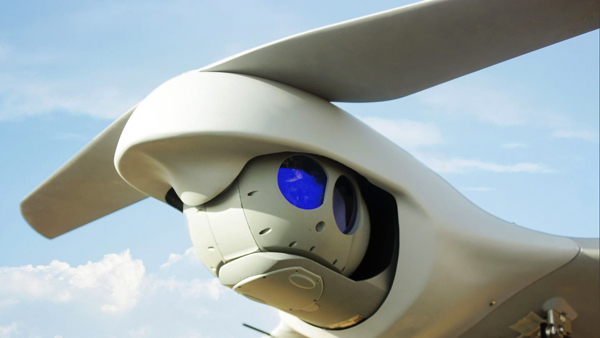- Inicio
- Texto no traducido
- Autonomous and Robotic Systems
Autonomous and Robotic Systems
martes 19 de marzo de 2019
Número: 77
Soldiers on foot provided with exoeskeletons, unmanned logistical convoys or engineering machines that can operate on their own can seem science fiction nowadays, but they are not. They only represent the application to the military field of the technologies (robotics, artificial intelligence, big data, etc.) that are already transforming the world in the civilian field. The revolution in Robotic and Autonomous Systems (RAS) is unstoppable, and the Spanish Army only has an option: to join the change.
With a view to 2035, the main fields of application of these systems are Logistical Support, Intelligence, Command and Control and Protection.
Logistical Support
In the Logistical Support area, there will be autonomous driving vehicles and unmanned air systems to supply first-line units (for example, to carry ammunition, water or food to combat units in direct contact with the enemy). There will also be warehouse management robots for automatised processes (machines able to move around the warehouse carrying materials, putting them in the right place, replenishing stocks). Last but not least, autonomous land systems will evacuate wounded soldiers and apply telemedicine techniques wherever it is necessary.

The Orbiter 3 will soon deploy in operations area
Intelligence
Regarding Intelligence, the Experimental Brigade BRIEX 2035 will have autonomous vehicles and aircraft with all kind of sensors in the battlefield, such as unmanned aircraft with information gathering missions and occasional attack. The closest example is the Orbiter 3, a small Remoted Piloted Aircraft System (RPAS), that the Army is about to receive and will soon be deployed in operation areas. It weights 30 kilos and has an operational range over 100 kilometres. The Fulmar, already used by the Army, is also a small RPAS type.
Command and Control
In the Command and Control field there are numerous applications for the robotic and autonomous systems: autonomous systems for traffic redirecting in multiple networks (designed to support decision-making with advanced-generation artificial intelligence), big data analysis systems in different command posts to accelerate their processes and reconfiguration systems in saturated environments using artificial intelligence.
Other possible tools at the disposal of BRIEX 2035 will be autonomous systems of electronic warfare against RPAS, jamming-generator autonomous systems (deliberate interference) based in artificial intelligence algorithms, and lastly, systems of advanced analysis of networks by battle mapping techniques (artificial intelligence systems that allow real-time analysis of the state of the battlefield, assigning electronic war targets and actions). The use of artificial intelligence in defence-suppression and attack actions is also considered.
Protection
Finally, in the Protection field, the extended use of exoeskeletons in support of the soldier on foot, as well as in progress in artificial intelligence and augmented reality to improve situational awareness by means of robots and autonomous systems that help the soldiers. The greatest advantage of exoeskeletons is that they reduce both the physical and cognitive strain of the soldier thanks to the use of sensors.
UNIDADES DO EXÉRCITO
- Araba Álava |
- Albacete |
- Alicante |
- Almería |
- Asturias |
- Ávila |
- Badajoz |
- Barcelona |
- Burgos |
- Cáceres |
- Cádiz |
- Cantabria |
- Castellón |
- Ceuta |
- Ciudad Real |
- Córdoba |
- A Coruña |
- Cuenca |
- Girona |
- Granada |
- Guadalajara |
- Gipuzkoa |
- Huelva |
- Huesca |
- Islas Baleares |
- Jaén |
- León |
- Lleida |
- Lugo |
- Madrid |
- Málaga |
- Melilla |
- Murcia |
- Navarra |
- Ourense |
- Palencia |
- Las Palmas |
- Pontevedra |
- La Rioja |
- Salamanca |
- Segovia |
- Sevilla |
- Soria |
- Tarragona |
- Santa Cruz de Tenerife |
- Teruel |
- Toledo |
- Valencia |
- Valladolid |
- Bizkaia |
- Zamora |
- Zaragoza



